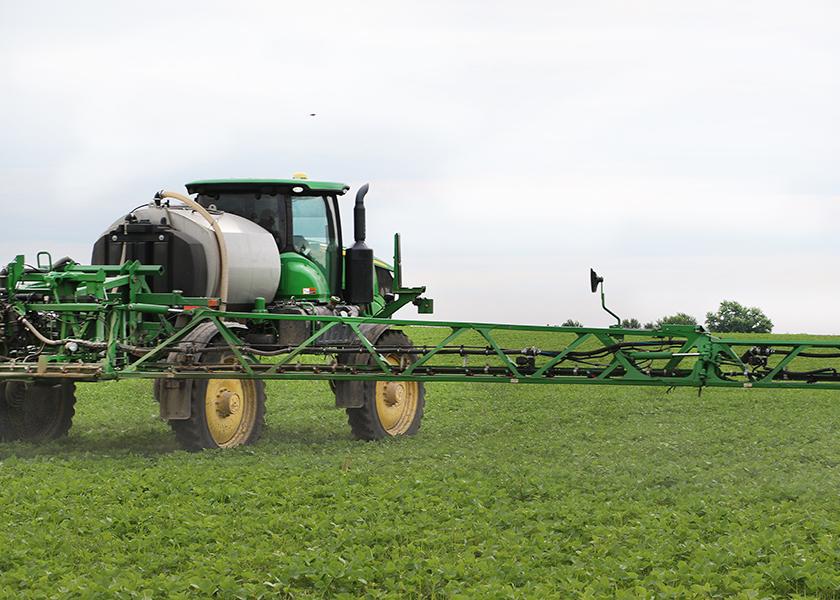Follow These 4 Steps to Keep Herbicide Applications on Target

If you’ve ever dealt with herbicide drift, you know how damaging the outcomes can be. The good news is, by using the right trait technology and following steps for precision applications, you can get effective weed control that stays on target.
Enlist® Herbicides vs. Generic 2,4-D
The trait technology in the Enlist® weed control system provides effective weed control plus herbicides with near-zero volatility. Enlist E3® soybeans offer tolerances to 2,4-D choline, glufosinate and glyphosate, while Enlist® corn offers the same plus an additional tolerance to FOP herbicides.
“Enlist One herbicide and Enlist Duo herbicide are the only 2,4-D products labeled for use on Enlist crops and for good reason,” says Iowa-based Enlist® field specialist Scott Jungman. “When compared with generic 2,4-D formulations, Enlist herbicides are significantly less likely to move off target. Herbicide drift results in less effective weed control and has the potential to cause damage, resulting in significant fines or even court cases.”
Jungman explains what sets Enlist® herbicides apart from other 2,4-D formulations: “Enlist herbicides contain 2,4-D choline, which is formulated with a novel drift-reduction technology called Colex-D that makes spray droplets significantly less likely to drift. So, when used according to label, Enlist herbicides land and stay on target, without requiring additional drift control agents.”
Here are the numbers setting Enlist herbicides apart from 2,4-D ester and amine:
- 2,4-D choline is 96% less volatile than 2,4-D ester.
- 2,4-D choline is 88% less volatile than 2,4-D amine.
Enlist® Herbicides vs. Dicamba
Jungman says Enlist herbicides provide several advantages over dicamba: “For one, the 2,4-D choline in Enlist herbicides is 236 times less volatile than dicamba.”
Enlist herbicides offer these additional benefits over dicamba:
- No calendar cutoff dates
- Greater flexibility with key tank-mix partners, including AMS
- No drift-/volatility-reducing adjuvants required.
“Finally, soybeans of any trait technology are not listed as susceptible to Enlist herbicides. This means, as long as you apply under the right wind conditions, you can spray Enlist herbicides with any soybean variety downwind,” Jungman says. “The same is not true with dicamba. Dicamba-intolerant soybeans cannot be downwind during applications.”
Jungman says dicamba drift has caused damage — and even yield loss — to susceptible crops across the Corn Belt. However, he says, when used correctly, the Enlist® system can cut down on these issues while providing effective control of even the toughest weeds.
Tips for On-target Applications
While Enlist herbicides do offer near-zero volatility, Jungman says, it’s still essential to follow best practices for on-target applications. Here are four tips for success:
1. Confirm proper field placement. “As with any herbicide, read the label first. Then find out what’s growing downwind of your fields to ensure proper placement. An advantage of the Enlist system is many crops, including corn, soybeans and sorghum, are not susceptible to Enlist herbicides. However, you may be near susceptible crops like tomatoes, watermelons or pumpkins,” Jungman says. “I recommend talking with neighbors to see if they plant susceptible crops in nearby fields and working together to prevent any damage to their — or your crops.”
2. Set up your sprayer correctly. “The sprayer and spray nozzles are the last things to come into contact with our Enlist herbicides, making them critical to maximizing coverage while minimizing drift potential,” Jungman says. “Make sure you use qualified nozzles and pressure combinations, and then adjust for the correct spray rate, spray volume and boom height.”
3. Watch weather conditions. “To prevent drift, target applications of Enlist herbicides when the wind speed is greater than 3 mph, but less than 10 mph. And remember, only spray when the wind is blowing away from susceptible crops,” Jungman says. “Additionally, if you’re experiencing exceptionally hot, dry conditions, consider increasing spray water to around 20 gallons per acre for better coverage.”
4. Do not apply during temperature inversions. “Temperature inversions act like lids keeping herbicides from reaching the ground. During an inversion, small droplets get trapped in a layer of warm air and later move off target once the wind picks up,” Jungman says. “Remember: Temperature inversions typically occur between dusk and dawn and when there is very little wind movement. That’s why applying when wind speeds are between 3 and 10 mph is critical.”
Jungman says these best practices are a good foundation, but he advises reading product labels and the latest Enlist® Product Use Guide to ensure precision applications. Also, find more resources for on-target weed control by visiting the Tech Topics - On-target Applications page at Enlist.com.
LEGALS
™ ® Trademarks of Corteva Agriscience and its affiliated companies. The transgenic soybean event in Enlist E3® soybeans is jointly developed and owned by Corteva Agriscience and M.S. Technologies L.L.C. Enlist Duo® and Enlist One® herbicides are not registered for sale or use in all states or counties. Contact your state pesticide regulatory agency to determine if a product is registered for sale or use in your area. Enlist Duo and Enlist One herbicides are the only 2,4-D products authorized for use with Enlist® crops. Consult Enlist® herbicide labels for weed species controlled. Always read and follow label directions. ©2024 Corteva. 019429 BR (04/24) CAAG4NLST067







